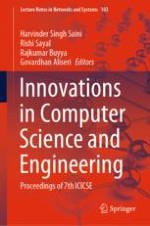2020 | OriginalPaper | Buchkapitel
Deep Learning Framework to Predict and Diagnose the Cardiac Diseases by Image Segmentation
verfasst von : R. Kannan, V. Vasanthi
Erschienen in: Innovations in Computer Science and Engineering
Verlag: Springer Singapore
Aktivieren Sie unsere intelligente Suche, um passende Fachinhalte oder Patente zu finden.
Wählen Sie Textabschnitte aus um mit Künstlicher Intelligenz passenden Patente zu finden. powered by
Markieren Sie Textabschnitte, um KI-gestützt weitere passende Inhalte zu finden. powered by
